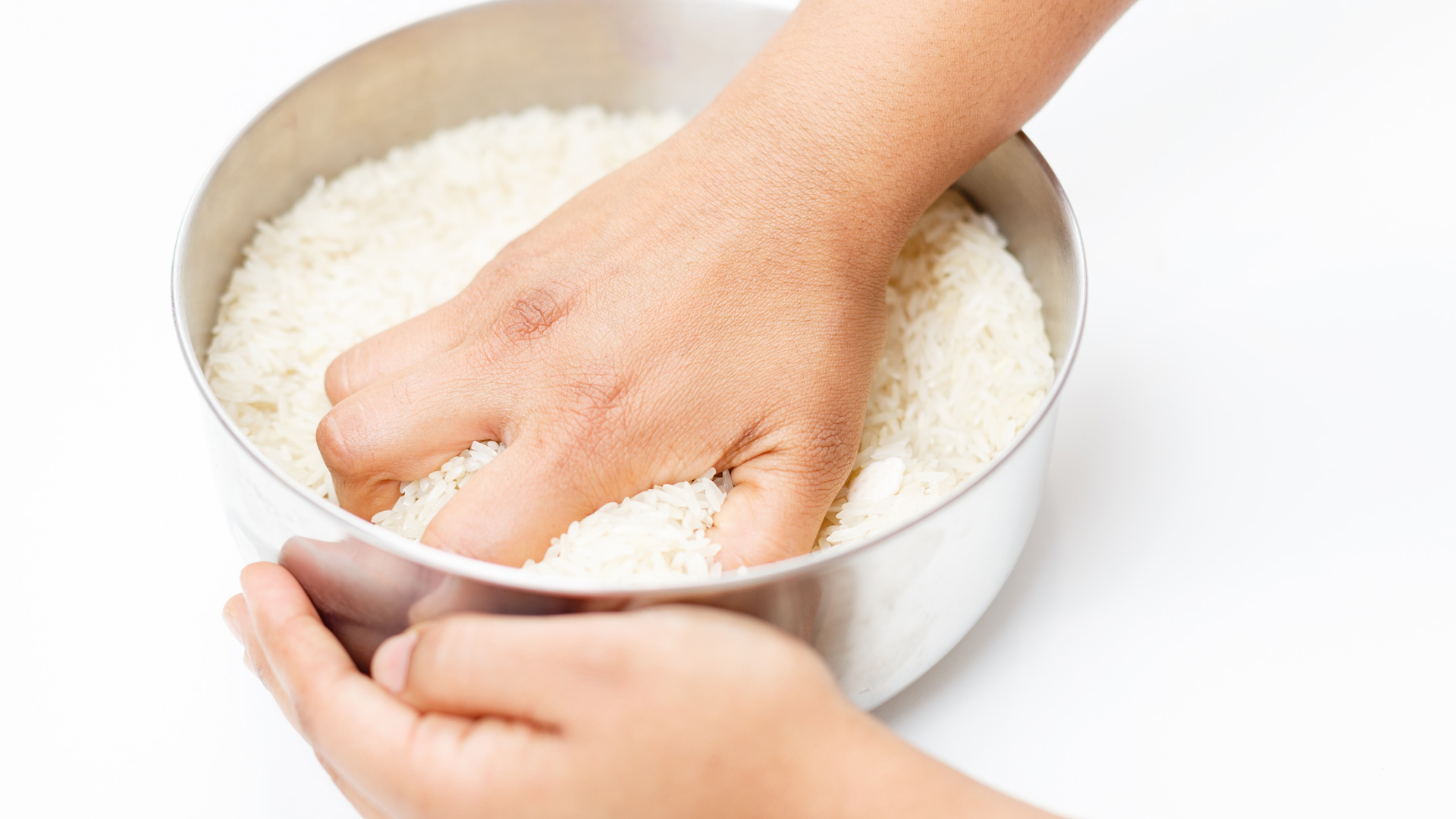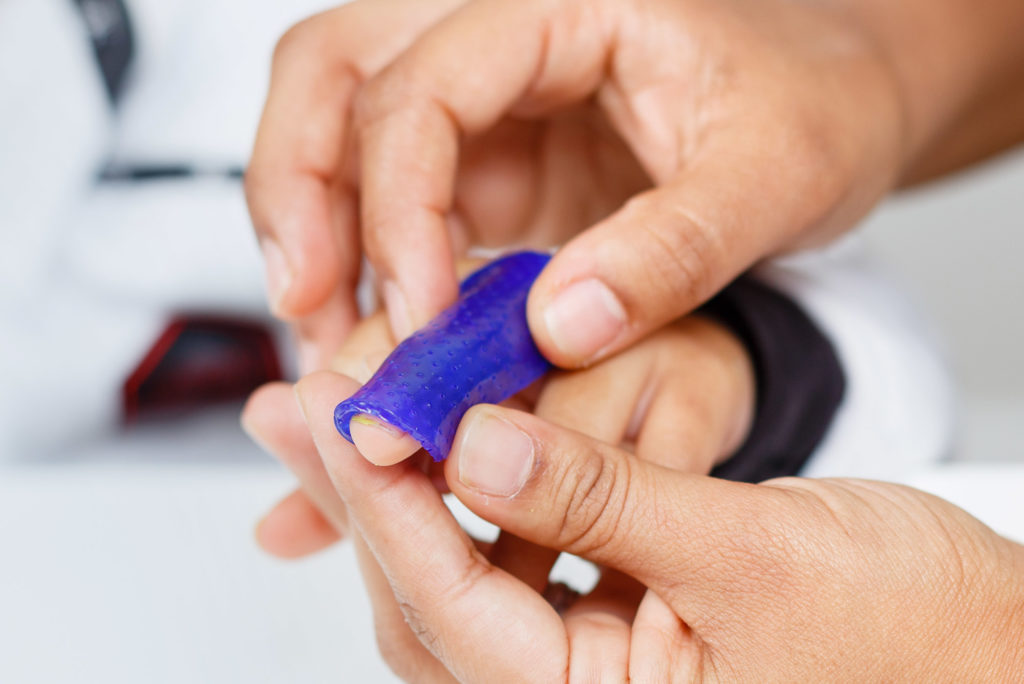Desensitisation is a technique we typically offer patients with traumatic scars – for example, people who have severed or lost a finger or had a hand or arm amputated.
Hypersensitivity isn’t a pain problem, and the good news is that by using desensitisation techniques, the sensitivity will often settle down.
Desensitisation involves introducing the scarred tissue to a range of textures. This could be anything from carpet to clothes to smooth surfaces – just things you would find in everyday life. We also use particles, such as rice and pasta, as well as tapping, which allows little vibrations to travel along the nerves.
Our programs typically include exposure to these kinds of things two or three times a day over several weeks. By doing this over time, hypersensitive scars start to settle.
While it doesn’t feel great at first, it’s important to keep going. That’s because, if you protect something for too long, it can get more sensitive.
If sensitivity persists, we can custom-make sleeves, for example, that cover the top of the finger. These can be worn at work so you can get on with what you need to do but can be removed when you’re at home.





